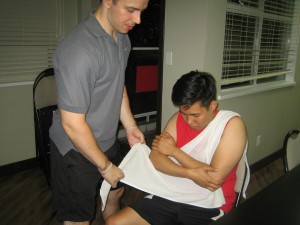Overview
- A dislocation occurs when the bone and the joint separate.
- Injuries connected to dislocations consist of damage to the membrane covering the joint, including tears to the ligaments and muscles.
Causes of dislocations consist of:

- Injuries as a result of sports;
- Rheumatoid arthritis;
- Natural joint defects;
- Joints that are weakened by a past injury; and
- Abruptly shaking a toddler’s arm or hand.
The shoulders are particularly susceptible to dislocation. Elbows, hips, jaws, fingers, ankles and even the backbone can be dislocated as well.
Dislocations – Signs And Symptoms
A dislocated joint is:
- Distorted;
- Very sore;
- Inflamed; and
- Bruised.
Generally it is difficult to distinguish a dislocation from a broken bone. It is best to seek medical assistance if you notice a dislocation. It is not advised to try and place a dislocated bone back its original position.
When treated by a doctor, you can expect the dislocated joint to work within two days. Activity might need to be restricted for the next month so the injury has sufficient time to heal.
Dislocations – Prevention
- Safeguard a previously injured joint by covering it with an elastic dressing or tape.
- Wear defensive pads (knee, wrist, shoulder, etc.) when playing contact sports or in other events in which you might fall or otherwise get hurt.
First Aid Procedure
Dislocations are often best managed by R.I.C.E. (known as rest, ice, compression and elevation) during the first 48 hours after the injury has occurred.
- Rest. Rest the wounded joint.
- Ice. Take crushed ice concealed in a plastic bag, covered in a towel and place on the injured area for about 30 minutes. Do this after each hour until the inflammation decreases. Ice helps to decrease the bleeding, inflammation and pain.
- Compression. Apply a comfortable, wet elastic dressing to the wounded joint. Lack of feeling, tingling or pain means the dressing is too tight.
- Elevation. Lift the injured joint above the level of the casualty’s heart.
